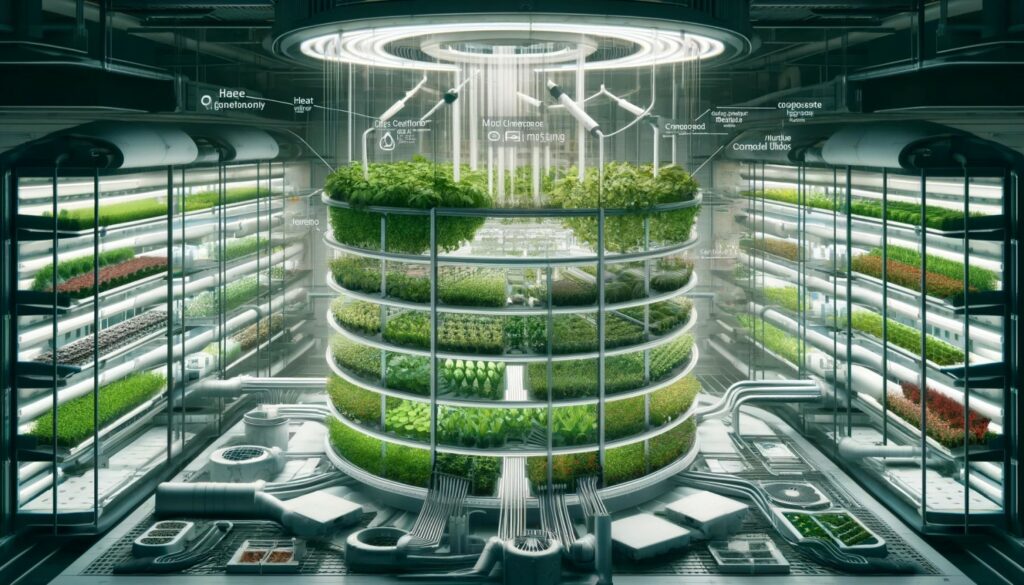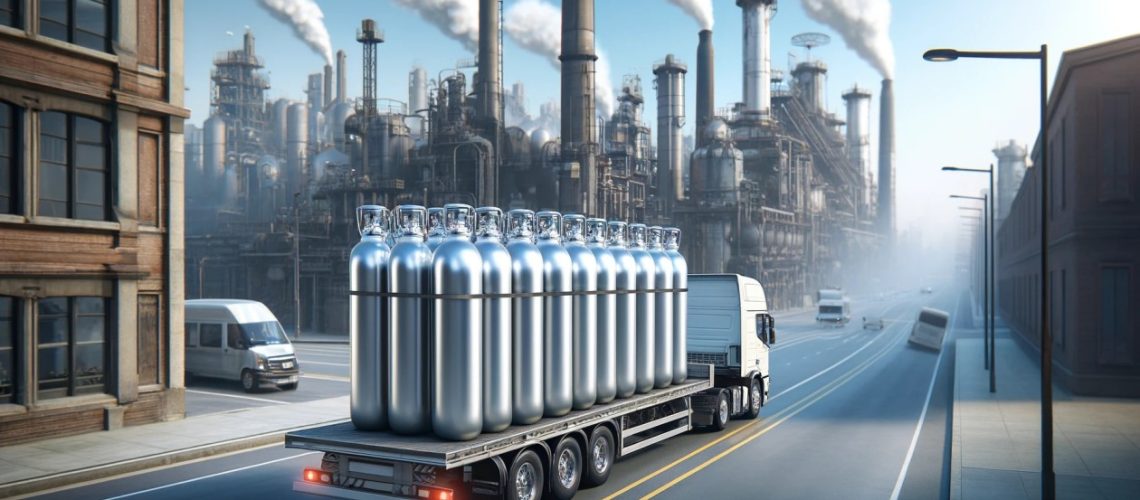Today’s modern farms are deeply committed to what they grow, how they grow it, and the quality of the food they produce. Sustainability is at the heart of their practices, including the use of renewable energy, water recirculation, waste heat recovery, and pesticide-free methods. However, when it comes to CO2 fertilization, many still depend on fossil CO2, which is liquified, purified, compressed, and transported to the farm using diesel trucks and steel tanks. This process ultimately increases carbon emissions rather than reducing them, often without our awareness.
Thankfully, innovative solutions are emerging to address these concerns. In one of our previous articles, we talked about Growing Green: Tackling CO2 Challenges in Indoor Farming for a Sustainable Future
Imagine achieving a nearly 100% circular farming system, where CO2 is harvested directly from the air and supplied to your crops. You set the desired CO2 levels in your climate control systems, and an advanced machine handles the rest—eliminating the need for fossil gas transport. You can proudly inform your customers that your tomatoes are nourished with CO2 captured from the atmosphere, setting your produce apart from the competition. Customers may even be willing to pay a premium for your environmentally friendly produce.
But is this vision truly attainable?

Breathe Easy: Transitioning from Fossil CO2 to Air-Captured CO2 with DAC Technology
Yes, it is now possible. In our previous article, we talked about Enhancing Sustainability in Indoor Farming: The Role of Direct Air Capture Technology. Imagine a greener solution: a system that captured CO2 directly from the atmosphere on-site, providing plants with the necessary fertilization without the environmental cost.
- Competitive Advantage: With an air-captured CO2 label, your produce can stand out in the market, appealing to retail and restaurant buyers who may be willing to pay a premium for environmentally friendly produce.
- Shorter Supply Chains: Small-scale DAC systems are deployed near the site of use, eliminating the need to transport liquid CO2 in tanks and reducing the complexity of supply chains.
- Hassle-Free Operations: By producing CO2 on-site, small-scale DAC systems eliminate the risks associated with handling pressurized tanks, streamlining farm operations.
- Sustainability: Utilizing repurposed CO2 aligns more closely with the sustainability goals of indoor growers, enhancing the environmental profile of their operations.
- Environmental Impact: The production of fossil CO2 releases greenhouse gases, undermining the environmental benefits of indoor-grown produce. Air-captured CO2 helps mitigate this impact.
- Cost Stability: The price of fossil fuels is subject to market fluctuations, impacting growers’ bottom lines. Moreover, the increasing interest in carbon sequestration practices may reduce the availability of fossil CO2, driving up prices in the near future.
By integrating DAC technology, indoor farms can achieve a new level of sustainability, positioning themselves as leaders in the green agriculture movement.
Navigating Small-Scale DAC Technology: A Comprehensive Checklist
As you delve into the realm of small-scale Direct Air Capture (DAC) technology, it’s essential to consider a range of factors to ensure optimal selection and implementation. Here’s a detailed checklist to guide your exploration:
Technology Selection:
- Capacity Assessment: Determine the daily CO2 capture requirements (kg/day) tailored to your specific application needs.
- Energy Sourcing: Evaluate the energy consumption of DAC systems and prioritize options aligned with sustainability objectives, with a preference for renewable energy sources.
- Climate Adaptability: Assess the suitability of DAC systems for diverse weather conditions, including temperatures and humidity variations.
- Scalability Potential: Choose a DAC system capable of scaling to accommodate future expansion plans in line with your operational growth.
System Design and Implementation:
- Footprint and Portability: Prioritize compact and lightweight DAC systems for seamless transport and installation, especially in indoor farming environments.
- Maintenance Planning: Plan for regular maintenance procedures to ensure optimal performance and lifespan of the system.
- Integration Compatibility: Opt for DAC systems conducive to seamless integration with existing climate control infrastructure, facilitating efficient communication and management within your indoor farming setup.
- Flexibility in Setup: Seek DAC solutions designed to complement existing circular farming practices, enabling easy incorporation of waste heat capture and other sustainable initiatives into CO2 generation processes.
Cost and Market Analysis:
- Initial Investment Considerations: Factor in the cost of the DAC unit, installation, and any additional equipment needed.
- Operational Expenditure Estimation: Estimate energy consumption, maintenance needs, and replacement costs for consumables i.e. air filters and adsorbent material.
- Government Incentives Exploration: Explore potential tax incentives, subsidies, or carbon credit opportunities available to support DAC technology adoption.Remember: Small-scale DAC is a developing field. While it offers promise for specific applications, the technology is still evolving. Be sure to research reputable vendors, consider the entire lifecycle cost, and ensure the system aligns with your sustainability goals.
